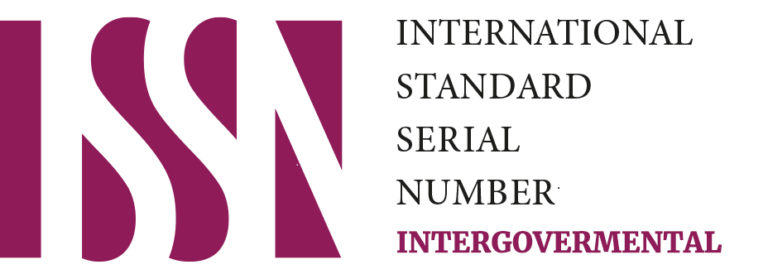ABSTRACT
One challenge experienced by health systems globally is the management of complex and changing health needs in areas of constrained resources. Building and strengthening health systems can secure better health outcomes such as access, coverage, quality, and efficiency. It can be achieved through evidence-based reforms from countries that have been successful. Despite international funding and policy commitments to help countries achieve the targets of the Millennium Development Goals (MDGs) of 2015, only a few of them achieved the MDG targets. Rwanda, however, has been touted among the top performers in reaching the MDGs, a leader in health system transformation and a model of health equity commitment for other nations. Among their achievements is the reduction of child malnutrition to 14.5% between 2005 and 2010 and vaccination against ten different diseases in more than 97% of Rwandan infants. These achievements were possible because the government adopted a community-based approach to strengthening the National Health System. They created a system focused on equity, ensured that health services were available, accessible, and acceptable, prioritized the vulnerable, and built capacity and trust through scientific evidence and innovation. The Rwandan experience teaches that governments must be committed in the long term, and their efforts towards strengthening the health system must be sustainable and continuous. The Rwandan health system development and strengthening initiatives prove that the initiatives can be replicated. The challenge lies in translating these lessons into scalable and sustainable initiatives that can be applied in diverse global contexts.
1. Introduction
Health systems worldwide experience challenges managing complex and changing health needs within constrained resources. Research shows that health systems have been unable to deliver existing interventions equitably, comprehensively, and adequately to those with the greatest need. There is a premise that underlies health planning that securing better health outcomes is only possible through building and strengthening health systems. Using evidence from other countries that have undergone public sector health strengthening may result in more efficient and effective health system reforms. This paper examines initiatives countries have taken to strengthen their public sector health systems and explores what Rwanda did post-genocide to be an example to many nations.
2. Strengthening Public Sector Health Systems
Bonds and Rich suggested that “the local health system strengthening process must be specifically adapted to the context.”[1] They outlined the core strategies of health system strengthening (HSS) grounded on five shared principles: “(1) collaborating with governments and communities within the public system; (2) addressing all components of health system strengthening (HSS) to enhance overall preparedness and integrating primary care-based clinical services; (3) investing in the capacity building across the entire system; (4) establishing data systems that facilitate impact assessment, information feedback loops, and collaborative research with academic partners; (5) making a sustained commitment to fortifying a public system that adapts to evolving needs over the long term.“[2] These principles are supported by the World Health Organization`s (WHO) assertion that a well-functioning unified health system is dependent on trained and motivated health workers, a well-maintained infrastructure, and a reliable supply of medicines and technologies backed by adequate funding, robust health plans, and evidence-based policies.[3]
2.1. Definitions of Health System Strengthening
Health system strengthening has been defined by the World Health Organization (WHO) as “the process of identifying and implementing the changes in policy and practice in a country’s health system so that the country can respond better to its health and system challenges.”[4] Marchal and colleagues defined HSS as ‘‘building capacity in critical components of health systems to achieve more equitable and sustained improvements across health services and health outcomes.’’[5] Although strengthening health systems is regarded as a long-term goal for many global health practitioners and policymakers, this definition is broadened to encompass a variety of initiatives and strategies aimed at enhancing “one or more functions of the health system, resulting in improved health outcomes through enhancements in access, coverage, quality, or efficiency.”[6]
The concept of HSS proposed by the World Health Organization (WHO) fosters national ownership of health strategies and ensures that support is coherent and efficient. According to Yong Kim and colleagues, building resilient health systems is a complex and resource-intensive task backed by adequate funding, robust health plans, and evidence-based policies.[7] In an interconnected, globalized world, health systems must be able to control and address global public health threats such as epidemic diseases and other severe events. [8]
In their working paper, Heylighen and Bernheim measured global progress by comparing subjective well-being scores for different countries. They defined progress as “an increase in global quality of life (QOL),” where QOL is subjective, not relative.[9] Heylighen and Bernheim used extensive data from the World Database of Happiness, confirming that most people intuitively hold the same underlying values of the Universal Declaration of Human Rights and correlate with QOL: health, wealth, security, knowledge, freedom, and equality.
2.2. Building Blocks of Functioning Health Systems
The Millennium Development Goals (MDGs) were developed in 2000 with targets to improve human welfare by the year 2015. Borne out of these goals, many low and middle-income countries (LMICs) have received international funding and policy commitments to treat some communicable diseases such as HIV, tuberculosis, and malaria. Additional obligations include the provision of contraceptives to women and vaccines for children and implementing treatment guidelines for maternal and child health (MCH) with program support from community health workers (CHWs). Despite these initiatives, only a few countries achieved the MDG targets. According to Bonds and Rich, these countries faced the challenge of non-alignment of complex delivery systems of technologies aligning at the point of care to meet each patient’s need. Recognition of this challenge led to the growth of HSS based on the WHO’s health system framework (2007) of six essential building blocks: 1) service delivery, 2) the health workforce, 3) information, 4) medical products, vaccines and technologies, 5) financing and 6) leadership and governance (stewardship).[10]Marchal and colleagues described the HSS framework as generic and open to diverging interpretations, thus recommending refinement of the mission statement of this framework to ensure a better alignment of global health actors with national actors.[11]
As Marchal and colleagues asserted, those who see global health challenges through the lens of scale (for example, policymakers, international stakeholders, and social ventures) do not see the HSS building blocks as a guide to implementers because they consist of many dimensions challenging to prescribe. This, they asserted, results in investments in uncoordinated vertical efforts fraught with integration and support challenges from local health systems. Bitton and colleagues posited that global health system leaders must recognize that with the evolving needs of the population, demand for higher-quality services, rising health costs, and the double burden of communicable and non-communicable diseases, strengthening primary healthcare (PHC) can meet these needs.[12]
2.3. Functions of Health Systems
Kim and colleagues stated that building resilient health systems takes years, if not decades. The efficacy of such systems hinges on social policies, public works, environmental conditions, economic development, and many other factors.[13] Kim and colleagues argued that disease-specific interventions could strengthen health systems.[14] In other words, disease-specific treatment efforts coupled with comprehensive care and wraparound services improve primary healthcare in some countries.
To improve health systems, planners and policymakers must develop a comprehensive view. This necessitates consideration of the health system’s human resources, financing and technologies and their inter-relations. Additionally, the population must be viewed as an integral part of the system, not just a beneficiary. Agnes Binagwaho, in the video “Building a Quality Healthcare System – The Rwandan Experience,” discussed the development of a healthcare system that focuses on equity. Her overarching goal is to create a system that leaves ‘no one out’ but prioritizes the vulnerable.[15]
Without specifying health system goals, assessing its performance is difficult. As Julio Frenk highlighted, other critical elements include the enabling functions of stewardship, financing and resource generation and the workforce.[16] Swanson and colleagues discussed a system thinking approach toward HSS. They asserted that a comprehensive systems perspective should guide health practice, education, research and policy. Their commentary proposed ‘systems thinking tools “and strategies with three overarching themes: collaboration across disciplines, sectors and organizations; ongoing, iterative learning; and transformational leadership. In transforming health practice, Swanson and colleagues emphasized the significance of considering social, political, and cultural contexts at the grassroots level, preparing for unforeseen outcomes, and demonstrating a willingness and preparedness to adapt.[17] They further asserted that health workers at all system levels could be transformational leaders by rallying with a common vision of equity and efficiency.[18]
2.4. Health Systems Diagnosis
Marchal and his colleagues state that “current health systems comprise several actors: public-oriented and private providers, formal and informal providers, professional, non-professional, and lay providers, and conventional/Western and traditional providers.”[19] The relationships are dynamic and complex, making it challenging to accurately identify a health system’s weaknesses. Balabanova and colleagues, in their review article, highlighted critical problems in health systems related to financing, resource generation, priority setting, and stewardship. The failure to collect funds, pool financial resources, and purchase effective care has declined in many settings. The scarcity of local funds to fill gaps that external donors are unwilling to support leads to inadequate care provision to those most in need. Balabanova and colleagues concluded, “Many healthcare organizations cannot establish the systems needed to prioritize, plan, and deliver effective policies.”[20] Swanson and colleagues highlighted that the health systems that follow a reductionist approach (suggesting a limited set of targeted interventions to improve health worldwide) are inadequate.[21]
Balabanova and colleagues asserted that the wealthiest countries are challenged to develop integrated models of care for people with complex chronic conditions, and developing countries have much less experience.[22] As Balabanova concluded, improved health systems functioning demands change in the global aid architecture by addressing critical issues such as coordination, comprehensiveness, continuity, capacity, and accountability. They alluded to the risk of aggravating diverse global initiatives addressing health system strengthening. They suggested radical action is needed to simplify the global health architecture and reduce transaction costs imposed on countries.[23]
2.5. Defining Health System Performance
Traditionally, health system performance has been outlined as the achievement of results or impacts on health outcomes.[24] Borne, out of this view, Frenk highlighted three common misconceptions about health system performance: the black box, the black hole, and the laundry list. The black box misconception focuses on the intricate mechanisms of the health system, which leads to misunderstanding. Once technologies and inputs are in place, outputs fall into place. The black hole misconception proposes that no money can suffice to achieve desired results. Like a black hole, the health system absorbs enormous resources without producing light or visible effects. Unlike the first two concepts mentioned above, the laundry list is an inventory approach. The laundry list approach defines the health system as “a list of the various organizations or persons that produce health services without being required to be coordinated or integrated.”[25]
The gains in health following the end of the MDG have been tremendous. Bitton and colleagues cited gains such as the declines in childhood mortality, maternal mortality, and new HIV infections by more than 50%, 45% and 40%, respectively. Additionally, more than six million malaria-related deaths were prevented.[26] As Bitton and colleagues asserted, unacceptable gaps in health outcomes and patient needs still exist despite the success of the MDG initiatives. These gaps have evolved from the vertical approach toward healthcare, resulting in fragmented and inefficient health systems that focus on disease treatment rather than promoting holistic health and well-being. Bartels summarized presentations from a Health Systems Strengthening webinar, where James Fitzgerald asserted that the COVID-19 pandemic exposed and exacerbated structural weaknesses of health systems. Fitzgerald stated that prevailing structural inequities, social exclusion, the lack of adequate financing, and health system segmentation and fragmentation proved poor systems performance during the crisis.[27]
Bitton cited other researchers who asserted, “achieving sustainable, quality universal health coverage requires a move towards integrated health systems and prioritization of PHC rather than continuing vertical programming alone.”[28]
In LMICs, the lack of PHC capacity compounded by the burden of non-communicable diseases, increased care complexity, acute threats, and variation in the quality of routine PHC all revealed gaps that result in poor health outcomes. Bitton and colleagues posited that the Primary Health Care Performance Initiative (PHCPI) framework clarifies the relationship between common global health areas of focus and classic primary health care functions.[29] This makes strong PHC the foundation of efficient, equitable, and resilient health systems and a priority when moving towards integrated health systems.[30]
3. Strengthening Health Systems In Rwanda
Thomson and colleagues presented a picture of post-genocide Rwanda, one with a profound decline in population health that persisted for almost a decade.[31] Bonds and Rich highlighted some parts of the image – no hospitals in two districts with a population of 400,000, an under-five mortality rate of 230/1000, and few options for life-saving medicines.[32] The Rwandan government, partnering with international agencies (such as Partners in Health (PIH) and coordinating with the country’s national policies, worked towards strengthening an integrated local health system. In these partnerships, the government aligned global health initiatives with national priorities. Equity-oriented national policies were concentrated on social cohesion and people-centered development.[33] The initiative focused on implementing national policies and procedures at all levels of a district health system, ensuring a continuum of care for all patients.
Thomson and colleagues outlined healthcare initiatives implemented nationally in Rwanda, such as a national health insurance policy, performance-based financing of health programs, a community health worker program, scale-up of vaccinations, HIV treatment and malaria reduction initiatives.[34] Agnes Binagwaho, in a Health Quality Forum video, highlighted three components that helped their country progress. These she called the 5Ss, the 3As, and the 3 Ones. Binagwaho further elaborated in the video that Rwanda had one national plan, one government, and one monitoring and evaluation plan, ensuring they made the most of each dollar. The government invested in and enforced aggressive health policies (for example, all citizens were required to purchase health insurance). The partnerships were managed centrally on the terms defined by the Rwandan government.[35] PIH and the Ministry of Health (RMOH) jointly led a regional effort based on the WHO’s six building blocks of health system strengthening: 1) renovation and equipping of dysfunctional health facilities, 2) hiing, retaining, and training the health workforce, 3) development of a medical record system, 4) the procurement of medical products and technologies, 5) financial support to for health insurance premium costs and user fees and 6) the governance strategic development to ensure the project’s sustainabilityoject. This effort was successful by constructing and staffing hospitals, supporting health centers, and equipping a network of community health workers that provided MCH, TB and HIV care. As Binagwaho presented in the video, Rwanda created a system that focused on equity, prioritized the vulnerable and built capacity and trust through scientific evidence and innovation.[36] The government ensured that health services were available, accessible (financially, geographically, and socio-culturally), and acceptable with innovations and tools.
Since these efforts, Rwanda has been touted among the top performers in reaching the MDGs and a leader in health system transformation. The MDG target of 14.5% reduced child malnutrition was achieved between 2005 and 2010, and more than 97% of Rwandan infants are vaccinated against ten different diseases, revealing but a few of their achievements. Abbott and colleagues described Rwanda as one of the most successful countries in Africa for the general social and economic progress and health development made over the last 15 years.[37] Witter and her colleagues also concurred on Rwanda’s achievement of substantial population health improvements. Rwanda is known for successfully introducing community-based health insurance, performance-based financing (which targeted demand and supply barriers), and broader health reforms that resulted in more effective aid coordination.[38]
4. Discussion: Health System Strengthening And Lessons From Rwanda
While different countries have employed other models of National Health System Strengthening (preventative, family doctor, primary care approach), one model widely discussed in the research literature is the community-based approach used in Rwanda. Rwanda is one country that has realized great success in its health sector. As Binagwaho and colleagues posited, few imagined that Rwanda, having experienced one of the worst spasms of mass violence, could be a model of health equity commitment for other nations.[39] The priority has been the government`s investment in the country’s development through dialogue and consensus, a rigorous suppression of corruption at all levels, and mainly pro-poor, evidence-based policies.[40] Abbott and her colleagues further referred to existing solid evidence that the policies of a determined government with the support of its development partners to implement these policies were primarily responsible for the significant improvements in the Rwandan’s lives. One major component of the work in Rwanda involved decentralization and community development policies. The government incorporated citizens into the development effort with performance contracts, which ensured that the government could hold local government, public institutions, and ordinary citizens accountable for contributing to the country’s development priorities. The establishment of CHWs selected by the local community and involved as semiautonomous agents/practitioners rather than assistants speaks to integration in the local context rather than a vertical approach. The provision of healthcare involved community action, entrusting control to the district, sector, cell, and village levels. Operating on an equity-based platform, Rwanda ensured that those members of their population in extreme poverty (25%) were exempted from purchasing insurance and other out-of-pocket expenses, which guaranteed that no one was denied healthcare if unable to pay at the time of service.[41]
Governments play an essential role in health care service provision, thus making public sector health systems more sustainable than private efforts alone. As Kim and his colleagues outlined:
“Only governments can guarantee that all citizens have access to health services necessary to lead full, healthy lives, thus enshrining health as a right. Second, democratic governments are accountable to their citizens, while non-state healthcare providers or NGOs are accountable to donors. Third, the government can design programs built on evidence and the local context or needs. Fourth, governments are well-positioned to provide services with the broadest reach (ensuring the vulnerable population is not left out) and are expected to provide services for their citizens in the long term. Fifth, with a national outlook, the public sector is positioned to balance needs and minimize duplication of efforts.”[42]
However, embedding health reform in the community and devolving some decision-making and responsibility to the local community cannot be overlooked. Abbott and her colleagues asserted that this community integration was perhaps the most vital part of the Rwandan health initiatives.[43] As Sachs and colleagues posited in the Lancet Commission, and applicable in this setting, robust public health systems should include strong relationships with local communities and community organizations, among the many other commitments.[44]
The Rwandan experience is one example of integrating public and private healthcare initiatives through a shared delivery infrastructure involving the local community, which is prudent and can foster efficient and equitable health systems. Strengthening public sector health systems for global progress requires that “nations build upon the fundamentals of public health and universal health coverage, ensuring principles of human rights and gender equality are considered.”[45]
Although there has been a dramatic decline in infant, child, and maternal mortality and excellent progress along the continuum of care, there is still room for significant improvement in Rwanda. This reality teaches that governments must be committed to the long term and that efforts must be sustainable and continuous.
5. Recommendations
Several research points to the success of the Rwandan government in implementing equity-oriented national policies that focus on social cohesion and people-centered development. One lesson from Rwanda is that governments could pilot and evaluate equity-oriented policies at the community level and scale nationwide if feasible.
Governments should work towards building capacity in communities to manage and deliver services. Interventions should be integrated into national policies and strategies, and any external support should be coordinated with local resources. The government must establish clear lines of accountability and monitoring systems for the health system’s performance.
6. Conclusion
Research shows that no single intervention can repair a weak health system; thus, multiple dimensions and interlinkages must be managed while operating in a political, social, and cultural context. Studies reveal and conclude that with the existing evidence, health-related development goals can be accomplished through locally integrated interventions. Strengthening public sector health systems to increase the global quality of life – may take years. However, it must be integrated, equity-oriented, built on primary healthcare initiatives, and transparent to be achievable. The Rwandan health system development and strengthening initiatives provide evidence that these initiatives can be replicated. The big concern should be implementing these supporting efforts and scaling from the local to the national level.
REFERENCES AND BIBLIOGRAPHY
Abbott, Pamela, Roger Sapsford, and Agnes Binagwaho. ‘Learning from Success: How Rwanda Achieved the Millennium Development Goals for Health.’ World Development 92 (April 2017): 103–16. https://doi.org/10.1016/j.worlddev.2016.11.013.
Agnes Binagwaho: Building a Quality Healthcare System – the Rwandan Experience, 2021. https://www.youtube.com/watch?v=NJdObLnScQg.
Balabanova, Dina, Martin McKee, Anne Mills, Gill Walt, and Andy Haines. ‘What Can Global Health Institutions Do to Help Strengthen Health Systems in Low Income Countries?’ Health Research Policy and Systems 8, no. 1 (December 2010): 22. https://doi.org/10.1186/1478-4505-8-22.
Bartels, Juliana. ‘Global Health Leaders Discuss Health System Strengthening to Prevent, Prepare, and Respond to Future Pandemics,’ 22 December 2022. https://www.unsdsn.org/global-health-leaders-discuss-health-system-strengthening-to-prevent-prepare-and-respond-to-future-pandemics.
Binagwaho, Agnes, Paul E Farmer, Sabin Nsanzimana, Corine Karema, Michel Gasana, Jean De Dieu Ngirabega, Fidele Ngabo, et al. ‘Rwanda 20 Years on: Investing in Life’. The Lancet 384, no. 9940 (July 2014): 371–75. https://doi.org/10.1016/S0140-6736(14)60574-2.
Bitton, Asaf, Hannah L. Ratcliffe, Jeremy H. Veillard, Daniel H. Kress, Shannon Barkley, Meredith Kimball, Federica Secci, et al. ‘Primary Health Care as a Foundation for Strengthening Health Systems in Low- and Middle-Income Countries’. Journal of General Internal Medicine 32, no. 5 (May 2017): 566–71. https://doi.org/10.1007/s11606-016-3898-5.
Bonds, Matthew H, and Michael L Rich. ‘Integrated Health System Strengthening Can Generate Rapid Population Impacts That Can Be Replicated: Lessons from Rwanda to Madagascar.’ BMJ Global Health 3, no. 5 (October 2018): e000976. https://doi.org/10.1136/bmjgh-2018-000976.
Farmer, Paul, Arthur Kleinman, Jim Kim, and Matthew Basilico, eds. Reimagining Global Health: An Introduction. 1st edition. University of California Press, 2013.
Frenk, Julio. ‘The Global Health System: Strengthening National Health Systems as the Next Step for Global Progress.’ PLoS Medicine 7, no. 1 (12 January 2010): e1000089. https://doi.org/10.1371/journal.pmed.1000089.
‘Health Systems Strengthening’, 2023. https://www.who.int/data/gho/data/themes/topics/health-systems-strengthening.
Heylighen, Francis, and Jan Bernheim. ‘Measuring Global Progress through Subjective Well-Being,’ n.d.
Marchal, Bruno, Anna Cavalli, and Guy Kegels. ‘Global Health Actors Claim To Support Health System Strengthening—Is This Reality or Rhetoric?’ PLoS Medicine 6, no. 4 (28 April 2009): e1000059. https://doi.org/10.1371/journal.pmed.1000059.
Sachs, Jeffrey D, Salim S Abdool Karim, Lara Aknin, Joseph Allen, Kirsten Brosbøl, Francesca Colombo, Gabriela Cuevas Barron, et al. ‘The Lancet Commission on Lessons for the Future from the COVID-19 Pandemic’. The Lancet 400, no. 10359 (October 2022): 1224–80. https://doi.org/10.1016/S0140-6736(22)01585-9.
Swanson, R. C., A. Cattaneo, E. Bradley, S. Chunharas, R. Atun, K. M. Abbas, K. Katsaliaki, N. Mustafee, B. Mason Meier, and A. Best. ‘Rethinking Health Systems Strengthening: Key Systems Thinking Tools and Strategies for Transformational Change.’ Health Policy and Planning 27, no. Suppl 4 (1 October 2012): iv54–61. https://doi.org/10.1093/heapol/czs090.
Thomson, Dana R, Cheryl Amoroso, Sidney Atwood, Matthew H Bonds, Felix Cyamatare Rwabukwisi, Peter Drobac, Karen E Finnegan, et al. ‘Impact of a Health System Strengthening Intervention on Maternal and Child Health Outputs and Outcomes in Rural Rwanda 2005–2010’. BMJ Global Health 3, no. 2 (April 2018): e000674. https://doi.org/10.1136/bmjgh-2017-000674.
WHO. ‘Strengthening Health Systems’. Accessed 8 June 2023. https://international-partnerships.ec.europa.eu/policies/human-development/strengthening-health-systems_en.
Witter, Sophie, Ian Anderson, Peter Annear, Abiodun Awosusi, Nitin N. Bhandari, Nouria Brikci, Blandine Binachon, et al. ‘What, Why and How Do Health Systems Learn from One Another? Insights from Eight Low- and Middle-Income Country Case Studies.’ Health Research Policy and Systems 17, no. 1 (December 2019): 9. https://doi.org/10.1186/s12961-018-0410-1.
World Health Organization. ‘Everybody’s Business — Strengthening Health Systems to Improve Health Outcomes : WHO’s Framework for Action,’ 2007, 44.
[1] Matthew H Bonds and Michael L Rich, ‘Integrated Health System Strengthening Can Generate Rapid Population Impacts That Can Be Replicated: Lessons from Rwanda to Madagascar’, BMJ Global Health 3, no. 5 (October 2018): 1, https://doi.org/10.1136/bmjgh-2018-000976.
[2] Bonds and Rich, 2.
[3] ‘Health Systems Strengthening’, 2023, https://www.who.int/data/gho/data/themes/topics/health-systems-strengthening.
[4] WHO, ‘Strengthening Health Systems’, accessed 8 June 2023, https://international-partnerships.ec.europa.eu/policies/human-development/strengthening-health-systems_en.
[5] Bruno Marchal, Anna Cavalli, and Guy Kegels, ‘Global Health Actors Claim To Support Health System Strengthening—Is This Reality or Rhetoric?’, PLoS Medicine 6, no. 4 (28 April 2009): 2, https://doi.org/10.1371/journal.pmed.1000059.
[6] Paul Farmer et al., eds., Reimagining Global Health: An Introduction, 1st edition (University of California Press, 2013), 198.
[7] Farmer et al., 196.
[8] ‘Health Systems Strengthening’.
[9] Francis Heylighen and Jan Bernheim, ‘Measuring Global Progress through Subjective Well-Being’, n.d., 15.
[10] Bonds and Rich, ‘Integrated Health System Strengthening Can Generate Rapid Population Impacts That Can Be Replicated’, 1.
[11] Marchal, Cavalli, and Kegels, ‘Global Health Actors Claim To Support Health System Strengthening—Is This Reality or Rhetoric?’, 3.
[12] Asaf Bitton et al., ‘Primary Health Care as a Foundation for Strengthening Health Systems in Low- and Middle-Income Countries’, Journal of General Internal Medicine 32, no. 5 (May 2017): 566, https://doi.org/10.1007/s11606-016-3898-5.
[13] Farmer et al., Reimagining Global Health, 196–97.
[14] Farmer et al., 199.
[15] Agnes Binagwaho: Building a Quality Healthcare System – the Rwandan Experience, 2021, https://www.youtube.com/watch?v=NJdObLnScQg.
[16] Julio Frenk, ‘The Global Health System: Strengthening National Health Systems as the Next Step for Global Progress’, PLoS Medicine 7, no. 1 (12 January 2010): 2, https://doi.org/10.1371/journal.pmed.1000089.
[17] R. C. Swanson et al., ‘Rethinking Health Systems Strengthening: Key Systems Thinking Tools and Strategies for Transformational Change’, Health Policy and Planning 27, no. suppl 4 (1 October 2012): 57, https://doi.org/10.1093/heapol/czs090.
[18] Swanson et al., 56.
[19] Marchal, Cavalli, and Kegels, ‘Global Health Actors Claim To Support Health System Strengthening—Is This Reality or Rhetoric?’, 4.
[20] Dina Balabanova et al., ‘What Can Global Health Institutions Do to Help Strengthen Health Systems in Low Income Countries?’, Health Research Policy and Systems 8, no. 1 (December 2010): 3, https://doi.org/10.1186/1478-4505-8-22.
[21] Swanson et al., ‘Rethinking Health Systems Strengthening’, 55.
[22] Balabanova et al., ‘What Can Global Health Institutions Do to Help Strengthen Health Systems in Low Income Countries?’, 3.
[23] Balabanova et al., 8.
[24] World Health Organization, ‘Everybody’s Business — Strengthening Health Systems to Improve Health Outcomes : WHO’s Framework for Action’, 2007, iii.
[25] Frenk, ‘The Global Health System’, 1.
[26] Bitton et al., ‘Primary Health Care as a Foundation for Strengthening Health Systems in Low- and Middle-Income Countries’, 157.
[27] Juliana Bartels, ‘Global Health Leaders Discuss Health System Strengthening to Prevent, Prepare, and Respond to Future Pandemics’, 22 December 2022, https://www.unsdsn.org/global-health-leaders-discuss-health-system-strengthening-to-prevent-prepare-and-respond-to-future-pandemics.
[28] Bitton et al., ‘Primary Health Care as a Foundation for Strengthening Health Systems in Low- and Middle-Income Countries’, 567,570.
[29] Bitton et al., 569.
[30] Bitton et al., 567.
[31] Dana R Thomson et al., ‘Impact of a Health System Strengthening Intervention on Maternal and Child Health Outputs and Outcomes in Rural Rwanda 2005–2010’, BMJ Global Health 3, no. 2 (April 2018): 1, https://doi.org/10.1136/bmjgh-2017-000674.
[32] Bonds and Rich, ‘Integrated Health System Strengthening Can Generate Rapid Population Impacts That Can Be Replicated’, 1.
[33] Agnes Binagwaho et al., ‘Rwanda 20 Years on: Investing in Life’, The Lancet 384, no. 9940 (July 2014): 371, https://doi.org/10.1016/S0140-6736(14)60574-2.
[34] Thomson et al., ‘Impact of a Health System Strengthening Intervention on Maternal and Child Health Outputs and Outcomes in Rural Rwanda 2005–2010’, 2.
[35] Health Quality BC.
[36] Health Quality BC.
[37] Pamela Abbott, Roger Sapsford, and Agnes Binagwaho, ‘Learning from Success: How Rwanda Achieved the Millennium Development Goals for Health’, World Development 92 (April 2017): 103, https://doi.org/10.1016/j.worlddev.2016.11.013.
[38] Sophie Witter et al., ‘What, Why and How Do Health Systems Learn from One Another? Insights from Eight Low- and Middle-Income Country Case Studies’, Health Research Policy and Systems 17, no. 1 (December 2019): 4, https://doi.org/10.1186/s12961-018-0410-1.
[39] Binagwaho et al., ‘Rwanda 20 Years On’, 375.
[40] Abbott, Sapsford, and Binagwaho, ‘Learning from Success’, 103.
[41] Abbott, Sapsford, and Binagwaho, 111.
[42] Farmer et al., Reimagining Global Health, 200–201.
[43] Abbott, Sapsford, and Binagwaho, ‘Learning from Success’, 112.
[44] Jeffrey D Sachs et al., ‘The Lancet Commission on Lessons for the Future from the COVID-19 Pandemic’, The Lancet 400, no. 10359 (October 2022): 1226, https://doi.org/10.1016/S0140-6736(22)01585-9.
[45] Sachs et al., 1226.






